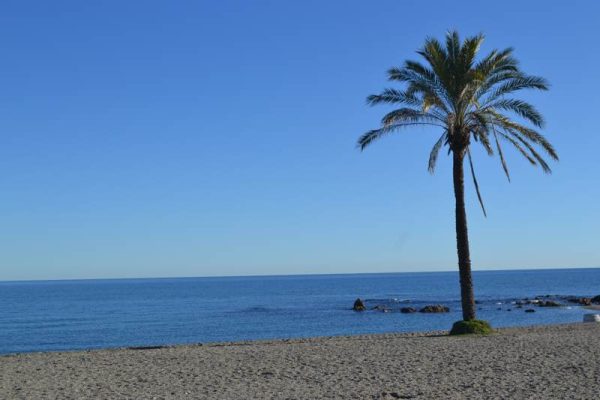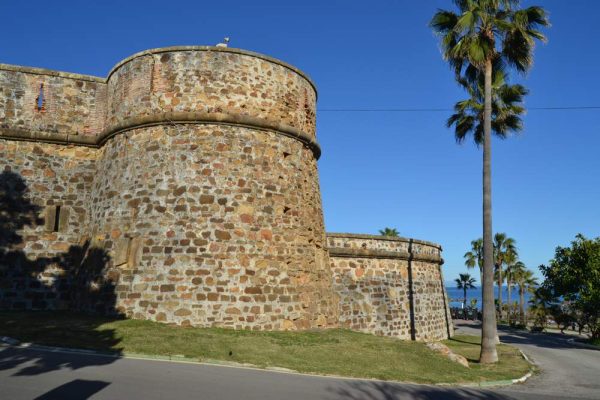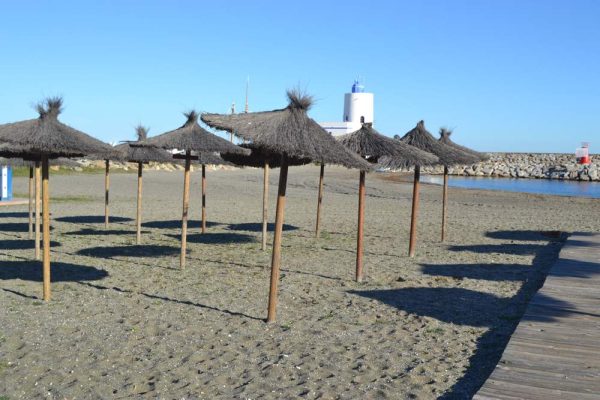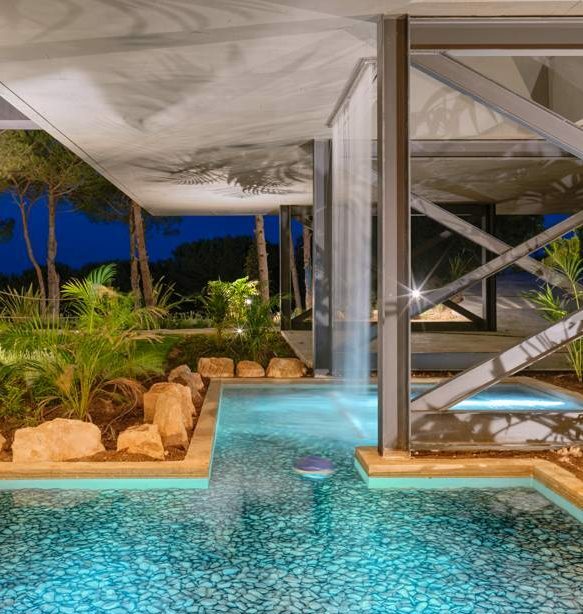Discover the Beauty and Charm of Manilva on the Costa del Sol
History of Manilva
Manilva has a rich history, from its origins in the Neolithic period, through its importance during Roman times, and the moments of uncertainty during the Muslim invasion in the Middle Ages, to its independence from Casares in 1796. Fishing, agriculture, and muscatel grapes have been fundamental elements in the evolution of the municipality, and today it offers tourists a wide variety of cultural, natural, and gastronomic attractions.
Origins of Manilva
Manilva is a municipality that dates back to the Neolithic period, as evidenced by the numerous archaeological remains found in the area. During Roman times, it was an important crossing point and settlement due to its natural harbor and fertile lands. The remains of the sulfur aqueduct and the Roman baths are silent witnesses of those times.
Culture and History of Manilva
Manilva treasures a great cultural and historical richness in its monuments, such as the Torre del Salto de la Mona, the Fortín de Sabinillas, the Church of Santa Ana, and the Castillo de la Duquesa, considered a Cultural Heritage site. The Neolithic settlement of the Castillejos de Alcorrín is another important archaeological site on the Costa del Sol. Muscatel grapes, a flagship product of the local gastronomy, have led to the creation of several wines of great quality and flavor.
Manilva: history, heritage, culture, and gastronomy. From its origins in the Neolithic period to its importance during Roman times and the moments of uncertainty in the Middle Ages, the municipality has evolved thanks to fishing, agriculture, and muscatel grapes. The Torre del Salto de la Mona, the Fortín de Sabinillas, the Church of Santa Ana, the Castillo de la Duquesa, and the Neolithic settlement of the Castillejos de Alcorrín are some of the outstanding monuments and archaeological sites. Muscatel grapes, a fundamental element in the local economy, have led to the creation of high-quality wines. An authentic experience of traditional Andalusia.
Tourist Attractions in Manilva
Manilva, a small town located on the southwest coast of Málaga, is an ideal place for tourists seeking tranquility and relaxation in a natural environment surrounded by the sea. In addition to its beaches and water sports, it offers a wide variety of tourist attractions.
Beaches of Manilva
Manilva has a coastline of 7.8 km that combines sandy beaches with rocky coves. The most prominent beaches are Sabinillas Beach, Castillo de la Duquesa Beach, and Cavanna Beach. All of them offer opportunities for water sports, sunbathing, or simply enjoying the sea and the sea breeze. In addition, the presence of beach bars along the coast offers a wide variety of gastronomic options.
Castillo de la Duquesa
The Castillo de la Duquesa is one of the most emblematic monuments in Manilva. Built in the 18th century on the site of an ancient Roman villa, this fortress and the Neolithic settlement of the Castillejos de Alcorrín are classified as Cultural Heritage sites. The fortress, which was used as a defensive outpost against pirates, houses a small exhibition showcasing the history of the place and how people lived there in the past.
Hiking in Manilva
Manilva is an ideal place for hiking enthusiasts. The area has numerous trails that traverse the gentle hills and valleys surrounding the town. One of the most notable trails is the one that goes through the Manilva River Canyon, where you can see ancient water mills and various species of flora and fauna.
Manilva is a place with a rich history and culture, surrounded by beautiful natural landscapes, offering numerous leisure and tourism options. Come and enjoy the natural and cultural beauties that this beautiful town on the western Costa del Sol has to offer.
Gastronomy and Local Products of Manilva
Manilva delights visitors’ palates, offering a wide variety of local cuisine and fresh local products. Here, you can enjoy delicious cuisine characterized by its simplicity and the use of quality ingredients.
Wines of Manilva
The wines of Manilva are exquisite and internationally renowned, especially the wines made from muscatel grapes. Thanks to the quality of the vineyards and its mild Mediterranean climate, these wines exhibit fruity, tropical, and floral notes. Furthermore, Manilva wines have received various accolades for their taste and quality, making them perfect to accompany any dish from the local gastronomy.
Typical Gastronomy of Manilva
The typical gastronomy of Manilva is based on fresh and quality products, highlighting the fresh fish and seafood from the Mediterranean. Among its typical dishes, you can find tomato soup, ajoblano (garlic and almond soup), garlic marinated suckling goat, fried fish, grilled sardines, and lobster rice stew. Additionally, you can also enjoy other local products such as avocado, fresh cheese, olives, and almonds.
If you love discovering the traditional flavors of the lands you visit, Manilva is the perfect place to enjoy an authentic Mediterranean gastronomic experience. The restaurants and bars in the area offer a wide variety of dishes for all tastes and budgets, so you are sure to find the perfect place to taste the best of the local cuisine and wines.
In conclusion, the gastronomy and local products of Manilva are a delightful discovery for lovers of good food. With its typical dishes and renowned Muscatel wine, Manilva is a must-visit destination to enjoy the best of Mediterranean cuisine. If you are a food lover who enjoys discovering new flavors and textures, you can’t miss the opportunity to visit this place on your next getaway!
Events and Festivals in Manilva
Manilva is a magical place, a piece of the western Costa del Sol that stands out for its history, culture, and gastronomy. If you visit Manilva, you can’t miss its annual festivals and events, as they are a unique opportunity to experience its traditions and way of life.
Feria de San Luis de Sabinillas
One of the oldest and most popular festivities in Manilva is the Feria de San Luis de Sabinillas, celebrated every year in August. Throughout the day, locals and visitors enjoy music, dancing, typical food, and traditional performances. The atmosphere is festive and welcoming, with the region’s wine and local gastronomy taking center stage.
The Feria de San Luis de Sabinillas is a demonstration of how the municipality keeps its culture and traditions alive while celebrating the joy of life. In its streets, you will find stalls selling crafts, food, drinks, and music, creating a very special atmosphere.
Feria de Manilva
Another highly anticipated festival in Manilva is the Feria de Manilva, held every year in September. It is a unique experience to get to know the essence of this town, its culture, and traditions in a pleasant and fun atmosphere.
During the Feria de Manilva, the streets are filled with stalls selling typical products, live music performances, children’s games, traditional games, and enogastronomy competitions. It is an excellent opportunity to interact with the locals, learn about their customs, and taste the typical products of the area, such as the internationally recognized Moscatel wine.
Manilva is a paradise on the western Costa del Sol, characterized by its peaceful atmosphere and exquisite cuisine. The annual festivals and events are a unique opportunity to experience the culture and traditions of this charming town. If you are looking for an authentic experience on the Costa del Sol, Manilva is the perfect destination. Don’t miss it!
PLACES WE RECOMMEND VISITING
– Puerto de la Duquesa de Manilva is one of the tourist attractions of the municipality. It is located between Marbella and Sotogrande. Thanks to the quality of its services, it flies the Blue Flag every year.
Lovers of water sports can enjoy all the services for their enjoyment.
In the Port we have a wide variety of restaurants where you can enjoy both local and international cuisine.
Manilva is the ideal place for those tourists who want to relax, tranquillity, nature, in our western Costa del Sol, surrounded by the sea. It is the last municipality of Malaga that borders the province of Cadiz, and its location makes it an attractive place for all visitors from the African continent.
OTHER PLACES TO VISIT
– Built on the site of an ancient Roman villa in 1767 to defend the coast from the continuous pirate raids, we have. The Castle of the Duchess. This fortress, next to the Neolithic settlement of Castillejos de Alcorrín, is listed as an Asset of Cultural Interest.
– The Fortín of Sabinillas contains the Manilva Archaeological Museum, whose collection consists of ceramics, grave goods, as well as ornaments, utensils and coins from between the 1st and 5th centuries.
– The Tower of Chullera, which is located next to the sea on the cape of the same name.
– The church of Santa Ana, built in the 18th century on the site of an earlier temple from the 16th century.
– Ingenio Chico, a sugar mill like many of those on the coast of Malaga, where sugar cane was processed and sugar, molasses and alcohol were obtained to make rum.
– Ignacio Infante, brother of Blas Infante, father of the Andalusian fatherland, restored Villa Matilde, to transform it into an exhibition of many Roman remains.




